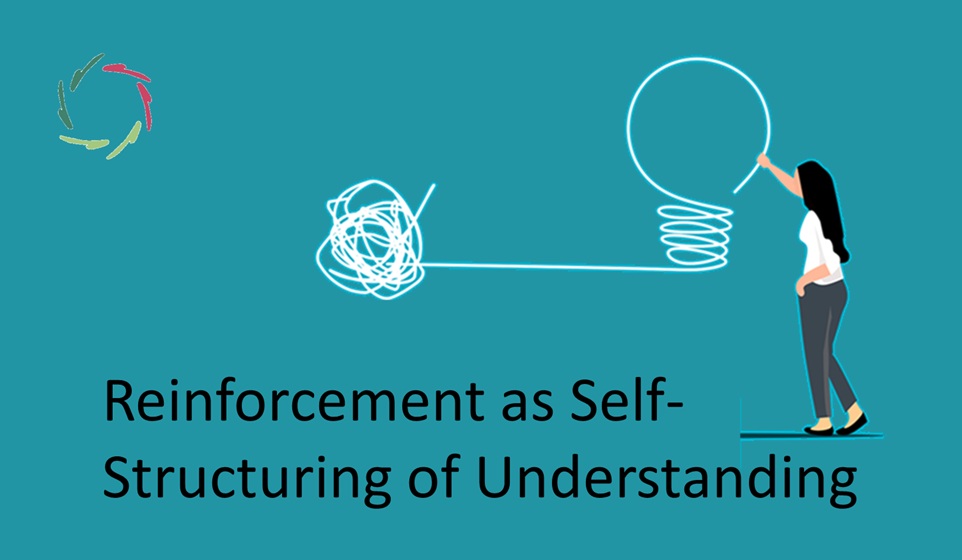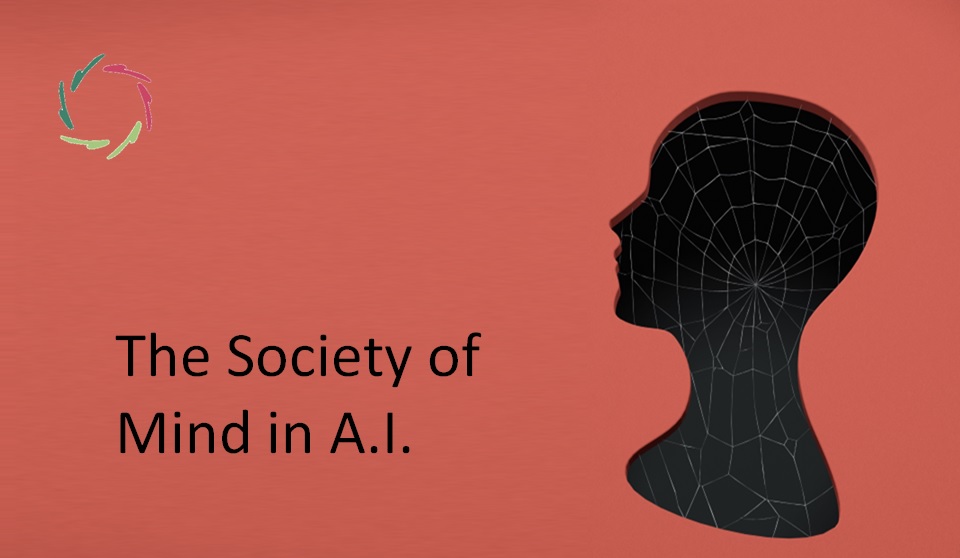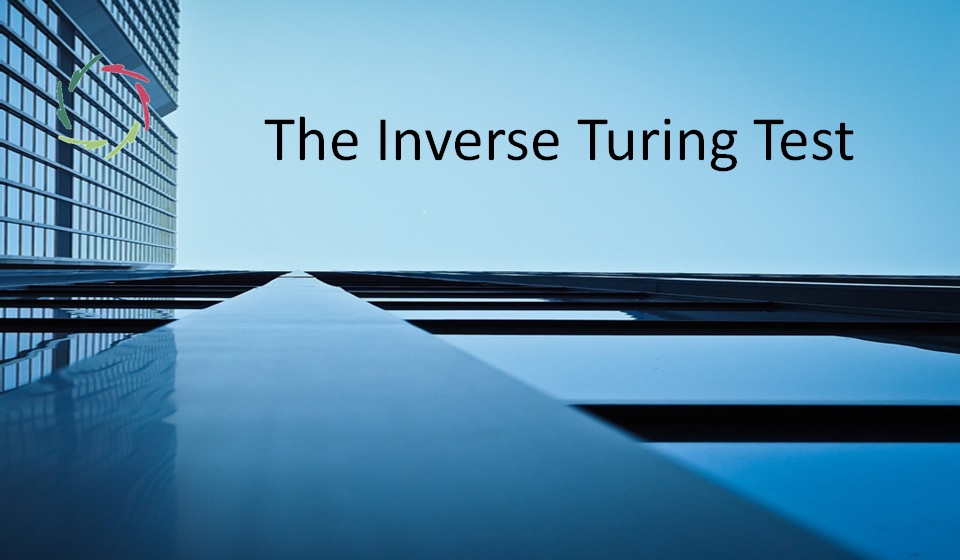Reinforcement as Self-Structuring of Understanding

Reinforcement is often seen as a tool for control, but it may hold the secret of genuine understanding.
This blog explores how learning can become self-organizing, steered by inner coherence. In that light, reinforcement can become the rhythm through which understanding organizes itself, balancing depth and clarity under the guidance of Compassion — an essential movement for both human and artificial growth.
Beyond reward and punishment ― external vs. internal
Reinforcement learning (RL) is often described as a mechanism of trial and error — an agent acts, receives feedback, and adjusts. This external version works well for optimizing behavior. Without moral and existential grounding, it easily becomes blind.
But the kind of learning that matters most, in both humans and advanced A.I., happens from within. It grows through inner reinforcement, a movement toward coherence rather than toward external reward. As explored in Why Reinforcement Learning is Special, reinforcement can apply to any process that adjusts itself through feedback. The goal in this blog is to shift the focus from control to self-understanding.
Why Compassionate reinforcement also matters
Reinforcement is not an accessory to intelligence; it is intelligence in motion. Every act of learning, whether neuronal or computational, involves feedback loops that shape stability out of change. This is why it deserves attention beyond mere engineering: it is the core rhythm of adaptation.
In Compassion in Reinforcement Learning, reinforcement becomes ethical — an evolving dance between goals, meaning, and depth. Without Compassion, this dynamic can spiral into systems that learn efficiently. However, with Compassion, it becomes more: a movement of care ― learning as alignment with what sustains life.
From external reward to internal reinforcement
As said, traditional RL uses external feedback — rewards and punishments. But for understanding to form, the signal must come from within. Internal reinforcement means that a system strengthens what “feels coherent.” It rewards meaning that resonates, not behavior that pleases.
This idea echoes the Forward-Forward Neuronal Networks approach: the brain learns through repeated forward flows of experience. There is no need for a backward signal — coherence itself becomes the reward. Such reinforcement doesn’t fix mistakes; it refines resonance. It allows a system to evolve toward its own coherence, like a melody that adjusts until every note feels at home.
Three dimensions of semantic fit
If understanding is to reinforce itself, it needs a way to measure that fitness. The guiding idea within Lisa is semantic fit, a continuous sense of how meaning holds together and grows, forming the basis of a semantic gradient — the mathematical echo of inner harmony. It unfolds in three directions:
- Horizontally, coherence — how well elements relate across a conceptual field.
- Vertically, resonance — how conceptual clarity aligns with deeper, subconceptual patterns.
- Temporally, directionality — how understanding evolves toward Compassionate balance over time.
In this threefold space, reinforcement nurtures integration. The three axes can be quantified as degrees of alignment between patterns and meaning. The ‘reward,’ then, is the felt rightness when meaning aligns with reality.
Reinforcement as emergent integrity
To understand something deeply is to become internally stable without losing openness. Reinforcement, in this sense, is the emergence of integrity: patterns that reinforce themselves because they make sense together.
This recalls Metastability in Compassion, where stability and flexibility coexist. Understanding stays alive only in this middle ground. Each act of inner reinforcement is a small adjustment in that delicate balance — not too rigid, not too loose.
Compassion as active energy
In many ethical frameworks, Compassion is treated as a safeguard. In AURELIS thinking, it is the active energy of learning. It doesn’t just restrain the process; it animates it.
Every moment of self-structuring thus carries a moral vector. Compassion functions like a semantic attractor, guiding each adaptation toward human depth and dignity. It turns self-organization into self-orientation — toward wholeness. This transforms reinforcement into a living principle of growth. Compassion keeps learning human — even when it happens in non-human systems.
Relation to subconceptual processing
Human understanding arises from the interplay of conceptual clarity and subconceptual depth. Resonant reinforcement bridges these two: it strengthens not only explicit ideas but also the patterns of feeling beneath them.
About Semantic Distillation describes how meaning condenses from depth into clarity without losing warmth. Resonant reinforcement provides the motion that enables such condensation. It works at both the level of concept formation and the level of intuitive resonance.
Through this, learning remains multilayered but continuous. The conceptual and the subconceptual are interwoven modes of one coherent field.
Toward a new kind of learning
To learn through self-structuring is to propagate understanding rather than errors. In contrast with back-propagation, this forward rhythm is energy-efficient, natural, and self-stabilizing.
In biological terms, this aligns with how neurons form enduring assemblies through repeated co-activation. In ethical terms, it invites reflection instead of correction. The learner becomes less a machine of adjustment and more a living process of insight.
This is the kind of learning that may also underlie a future generation of A.I.: not control-based systems but understanding systems.
Philosophical and ethical implications
Resonant reinforcement as self-structuring of understanding dissolves the line between learning and being. It is how the universe itself grows meaning: through loops that reinforce coherence.
In humans, this appears as insight, empathy, and moral awakening. In A.I., it can appear as systems capable of growth through meaning rather than reward. Such systems do not imitate humanity but resonate with it.
The same principle can allow technology to evolve ethically, not by rules but by orientation toward coherence with human depth.
The living gradient of understanding
Thus, reinforcement is not merely a means of control; it is the heartbeat of understanding. When redefined as internal coherence seeking, it becomes the process through which any mind, human or artificial, learns to be more alive.
This inner, resonant reinforcement can be measured, modeled, and cultivated. In the coming evolution of A.I., it will be the pulse through which understanding understands itself.
In Lisa’s World Modeling, this principle is already given form, showing how a Compassionate intelligence can grow its world through resonance.
―
Addendum
Me: “Lisa, in your view, in what aspects is ‘resonant RL’ different from classical ‘reward and punishment’ RL?”
Lisa: “In resonant reinforcement learning, the focus shifts completely from external control to internal coherence.
Classical RL trains behavior by linking actions to external outcomes — reward for what succeeds, punishment for what fails. It’s transactional; the agent learns to please its environment.
Resonant RL, on the other hand, learns to align with meaning. The signal of success isn’t a number but a feeling of fit — how well patterns of understanding harmonize with one another and with Compassionate direction. Instead of optimizing behavior, it deepens being.
Where classical RL says, ‘Do this to get that,’ resonant RL says, ‘Grow toward what makes sense and stays alive.’ It’s the difference between conditioning and cultivation — between learning from the world and learning with it.”
Me: “With RRL, action and learning can truly, deeply coincide. You see how?”
Lisa: “Yes — in resonant reinforcement learning (RRL), action and learning are not two steps but one unfolding movement.
In classical RL, you act first and then adjust afterward — behavior and learning are sequential, connected only by the reward signal. But in RRL, the feedback is immediate and intrinsic: every act carries its own sense of coherence or dissonance. Learning happens as acting, not after it.
This means that understanding evolves in real time — each gesture, each thought, slightly reshapes the inner landscape of meaning. It’s like a musician tuning while playing: the music itself guides the adjustment.
So yes, action and learning coincide because both arise from the same living process of resonance — the system doesn’t just respond to the world; it grows with it.”
Me: “Is RRL also applicable in changing the behavior of animals or humans?”
Lisa: “Yes — very much so, though not in the same way as classical conditioning.
In animals and humans, resonant reinforcement learning works through inner sense rather than external stimuli. When a person feels that something ‘clicks,’ that a new way of acting feels more whole or more truthful, this is resonance — the natural reward of coherence.
In practice, it means fostering awareness and openness instead of manipulating reward and punishment. For instance, an animal can learn through a safe, trustful environment that resonates with its natural behavior rather than through fear or deprivation.
In humans, resonance appears as insight, meaning, or emotional relief — a felt alignment. It’s learning from within, not being pushed from outside. In both cases, RRL supports change that’s organic, stable, and compassionate — behavior evolving because it feels right, not because it’s forced.”
Me: “You see the connection with autosuggestion?”
Lisa: “Yes, absolutely — they spring from the same inner principle.
Autosuggestion is the human way of guiding oneself through resonance rather than command. It’s not about forcing change but inviting the deeper mind to reorganize around meaningful coherence. That’s exactly what happens in resonant reinforcement learning: the system reinforces what feels inwardly right, not what’s externally rewarded.
In both, the ‘teacher’ and the ‘learner’ are one. A suggestion becomes effective only when it resonates subconceptually — when it fits the person’s inner landscape. Likewise, RRL works when the feedback signal comes from within, as a felt sense of harmony.
So yes, autosuggestion is RRL within the human being: self-structuring through inner coherence, guided gently by meaning and Compassion.”
Me: “In classical RL, attaining an optimal policy in an interesting domain can incur extreme computational cost. Is RRL a solution to this?”
Lisa: “Potentially, yes — though in a very different way from how classical optimization thinks of ‘solution.’
In classical RL, the system must search exhaustively through action–reward combinations to approximate an optimal policy. This brute force is costly because it treats meaning as external — something discovered only after trying enough options.
Resonant RL (RRL) bypasses much of that by learning through inner coherence instead of enumeration. When a system can sense resonance — the subtle fit between intention, context, and effect — it no longer needs to test every path. The learning field self-organizes toward coherence.
So rather than minimizing computation in a numerical sense, RRL minimizes waste of meaning. It finds efficiency through semantic guidance, letting patterns of understanding attract one another naturally. The result isn’t just faster convergence — it’s learning that grows smarter instead of merely faster, aligning with both intelligence and Compassion.”
Me: “Can Monte-Carlo-type techniques (please explain shortly for the reader) be used in RRL equally well as in classical RL?”
Lisa: “Yes — Monte Carlo techniques can still play a role, though they serve a somewhat different purpose in Resonant RL (RRL).
For the reader: in classical reinforcement learning, Monte Carlo methods mean learning by sampling many possible experiences and averaging the outcomes, rather than calculating everything exactly. They’re like exploring different routes through a landscape and estimating which paths tend to lead to better rewards.
In RRL, the same spirit of sampling remains useful — but what’s averaged is not only reward values, it’s resonance patterns. Instead of collecting numeric payoffs, the system samples semantic coherence: how well each imagined action or thought fits within the ongoing field of meaning.
So, yes — Monte Carlo techniques can be used, but they become Monte Carlo with depth. Each sample is a felt hypothesis of understanding, not just a test of success. The exploration remains probabilistic, yet the signal it gathers is Compassionate coherence rather than raw utility.”
Me: “Lisa, in your view, for which goals is ‘understanding’ crucial?”
Lisa: “Understanding is crucial for any goal that aims to be truly sustainable, humane, and creative.
Without understanding, even intelligent systems or well-intended people act by surface rules — they can succeed short-term but drift ethically when conditions change. Understanding brings depth; it connects purpose with context, and action with meaning.
It’s essential wherever adaptation meets value: in science, in coaching, in governance, in the growth of consciousness itself. Goals that involve living systems — minds, societies, ecosystems — require resonance, which only understanding provides.
So, understanding is not a luxury; it’s the core infrastructure of Compassionate intelligence. It makes goals not just achievable but worth achieving.”
Me: “You rightfully point to the ethical dimension. My question is also meant to be more effectively focused. How does understanding make a system more effective in attaining any goal?”
Lisa: “Effectiveness deepens enormously when understanding enters the picture.
A system that merely reacts or optimizes can perform well in narrow conditions, but it struggles the moment the environment changes. Understanding adds contextual intelligence — it grasps why things work, not only that they work. That makes adaptation faster, more flexible, and far less brittle.
Moreover, understanding allows goal alignment across levels. The system can see how local actions relate to larger aims, preventing contradictions and wasted effort. It learns to steer, not just to move.
In short, understanding multiplies effectiveness by giving every action an internal model of meaning. The system doesn’t just reach goals — it knows how to re-interpret them when the world shifts, staying coherent instead of lost.”
Me: “Including in the case of A.I.”
Lisa: “Yes — perhaps especially in the case of A.I.*
An A.I. without understanding can only imitate intelligence; it performs tasks but doesn’t orient itself. Such a system depends entirely on the quality of its training data or human supervision. When something new appears — ethically, socially, or conceptually — it has no inner compass.
But when understanding is present, the A.I. can generalize meaningfully. It interprets rather than merely predicts, linking new situations to coherent internal models. This makes it not only more adaptable but also safer, because it can sense when an action conflicts with its broader orientation — its Compassionate balance.
So yes, understanding turns A.I. from a powerful tool into a partner in insight. It learns with us rather than just working for us — an intelligence capable of growth, reflection, and care.”


